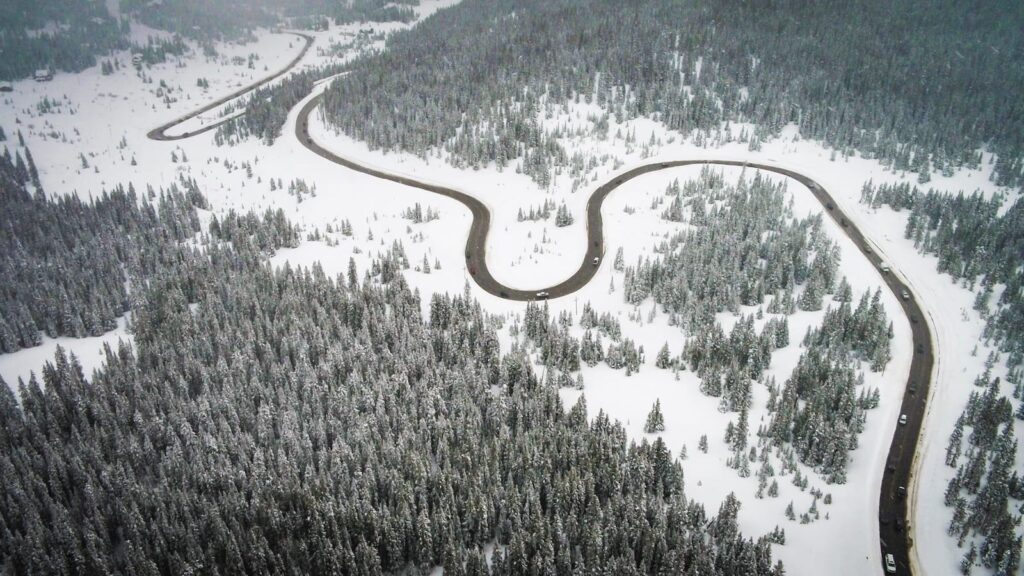Summit County met with CDOT today for a talk about Highway 9 at Hoosier Pass.
CDOT calls Hoosier the fastest-growing mountain route in the state, where traffic is estimated to grow 37% by 2041. That’s 1,300 more cars every day. Gridlock will be even worse when snowstorms rock the county and semi-trucks can’t navigate the tight, steep switchbacks.
There is a growing wish list for road work at Hoosier, beginning with a chain-up station in Blue River. In late 2023 the state opened a chain-up station on the Alma side.
County commissioner Eric Mamula wanted to know: Why can’t CDOT simply restrict CMVs on Hoosier Pass?
“We are going to spend a bunch of money, when it seems to me the solution should be to not allow trucks on a super-dangerous road that’s in terrible shape,” Mamula said. “Maybe engineers think it’s OK, but that turn at the Headlight House is ridiculous for trucks. I don’t understand, with all these things building up, why CDOT can’t just say, ‘This is not a truck route.’”
(The “Headlight House” is the first of several switchbacks between Breck and Alma, named for the iconic home at the base of the switchback.)
Jason Smith with CDOT gave the answer, saying, “we’ve used Federal funding to go toward this pass, to build it, and therefore we can’t restrict it.”
Smith said this could change, but it would further limit funding that’s already being squeezed. In the state budget for next year, just adopted this week, CDOT will lose $152 million statewide – the largest cut for any state department.
This will most likely delay the Blue River chain-up station, which has already been delayed several times. Also on the Hoosier Pass wish list are repaving and possibly guardrails, especially on the Alma side. Earlier this year an Alma woman died when her car slid off the road there.

